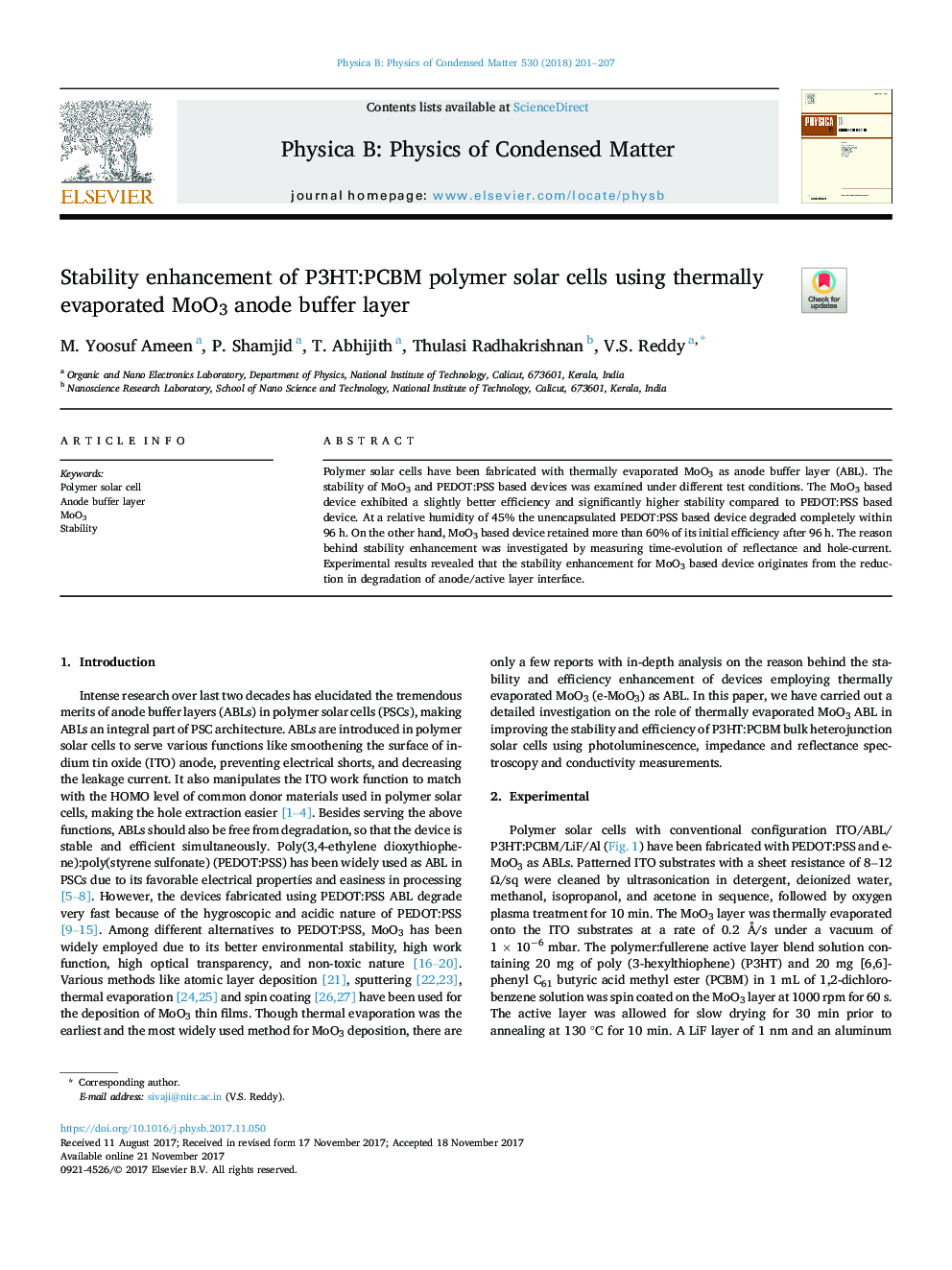| Article ID | Journal | Published Year | Pages | File Type |
|---|---|---|---|---|
| 8161677 | Physica B: Condensed Matter | 2018 | 7 Pages |
Abstract
Polymer solar cells have been fabricated with thermally evaporated MoO3 as anode buffer layer (ABL). The stability of MoO3 and PEDOT:PSS based devices was examined under different test conditions. The MoO3 based device exhibited a slightly better efficiency and significantly higher stability compared to PEDOT:PSS based device. At a relative humidity of 45% the unencapsulated PEDOT:PSS based device degraded completely within 96Â h. On the other hand, MoO3 based device retained more than 60% of its initial efficiency after 96Â h. The reason behind stability enhancement was investigated by measuring time-evolution of reflectance and hole-current. Experimental results revealed that the stability enhancement for MoO3 based device originates from the reduction in degradation of anode/active layer interface.
Related Topics
Physical Sciences and Engineering
Physics and Astronomy
Condensed Matter Physics
Authors
M. Yoosuf Ameen, P. Shamjid, T. Abhijith, Thulasi Radhakrishnan, V.S. Reddy,
